Posts Tagged anti-inflammatory
August 12, 2019 at 3:25 am · Filed under ARTICLES by other authors, RLS and Inflammation ·Tagged anti-inflammatory, restless leg syndrome, restless legs, rls
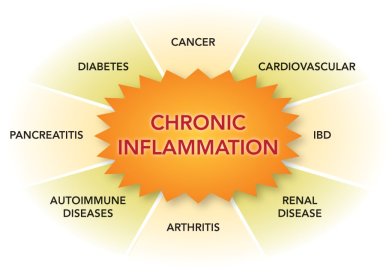 Until recently, there were various competing theories as to the causes of RLS. Prominent theories included:
Until recently, there were various competing theories as to the causes of RLS. Prominent theories included:
* Iron deficiency
* Dopamine dysregulation
* Infection
* Chronic diseases-kidney failure, diabetes & peripheral neuropathy;
* Certain medications
* Pregnancy
New research, however, indicates that although the above conditions are highly associated with Restless Leg Syndrome, it is underlying chronic inflammation that is causing these conditions in addition to the RLS. Therefore, RLS and the above conditions are actually concurrent side effects of underlying, chronic inflammation.
Groundbreaking research conducted in 2012 revealed “The fact that 95% of the 38 highly-associated RLS conditions are also associated with inflammatory/immune changes suggests the possibility that RLS may be mediated or affected through these mechanisms. Inflammation can be responsible for iron deficiency and hypothetically could cause central nervous system iron deficiency-induced RLS. Alternatively, an immune reaction to gastrointestinal bacteria or other antigens may hypothetically cause RLS by a direct immunological attack on the central or peripheral nervous system.”
Current research suggests that INFLAMMATION is the root cause of RLS, as well as the  concurrent conditions (once thought to be the source of RLS).
concurrent conditions (once thought to be the source of RLS).
The inflammation causing RLS can also affect iron levels. The scientific community agrees that inflammation can affect iron levels. The causality is often confused here: low iron appears to be one of the guilty parties when it comes to RLS symptoms but it is inflammation that is causing the low iron levels. Increasing iron levels will improve RLS symptoms, but addressing the underlying inflammation can actually cure the condition.
Dopamine imbalance and RLS are both caused by inflammation. There are many scientific studies that show that a dopamine imbalance can be due to either low iron levels or caused directly from inflammation. Increasing dopamine levels helps with the symptoms, but does not deal with the actual cause. The inflammation that is causing the dopamine imbalance must be dealt with directly if the levels are ever to stabilize.
Infection causes chronic inflammation throughout the body and RLS is simply a “biomarker” revealing the high inflammation.
Chronic conditions such as kidney failure and diabetes are associated with high inflammation throughout the body which then causes the RLS.
Medications hypothesized to cause RLS are known to increase inflammation.
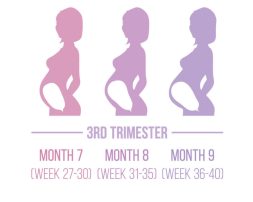 RLS is caused by the higher inflammation found in pregnant women. Many scientific studies show that RLS symptoms are at their worst in the third trimester of pregnancy. Studies also show that inflammation levels tend to be higher in pregnant women, especially the third trimester.
RLS is caused by the higher inflammation found in pregnant women. Many scientific studies show that RLS symptoms are at their worst in the third trimester of pregnancy. Studies also show that inflammation levels tend to be higher in pregnant women, especially the third trimester.
Yugeva Cryo is part of Evlee Healthcare Pvt. Ltd. – a progressive conglomerate of health professional from India. The young and vivacious company has been formed with a very clear focus to give innovative technological advancements to India and all over the world. Bringing in new technologies and fostering a new era of unconventional, yet highly effective and scientifically backed healthcare processes and practices to India, Evlee is all set to usher in a new regime of health and happiness to the classes and masses of the country and around the world. https://www.yugeva.com/about-us
Permalink
February 24, 2019 at 8:19 am · Filed under Scientific Studies Linking RLS and Inflammation ·Tagged alternative medicine, An ABSOLUTE Cure for RLS, anti-inflammatories, anti-inflammatory, aspartame, astaxanthin, caffeine, calcium, cayanne, chronic inflammation, curcumin, diet, dopamine, dopamine levels, Dr. Leonard Weinstock, Electromagnetic Fields, EMF, epigenetics, epigenome, ferritin, ferritin level, food intolerance, gaba, ginger, glutamate, glutamine, gluten, herbal remedies, herbs, Histamine Intolerance, histamines, homeopathy, inflammation, Inflammation and RLS, inflammation remedies, insomnia, iron, iron level, magnesium, minerals, monosodium glutamate, msg, natural antihistamines, natural healing, natural medicine, nsaids, nutrution, omega 3, restless arms, restless feet, restless leg syndrome, Restless Legs and Insomnia, restless legs cure, restless legs remedy, restless legs symptoms, restless legs syndrome, restless legs syndrome symptoms, rls, RLS and Epigenetics, RLS and Food Intolerance, RLS and Inflammation, rls cure, rls remedy, rls symptoms, salt, silent inflammation, sleep disorders, st. john's wort, sugar, systemic enyzmes, The Restless Legs Diet, vitamin b12, vitamin c, WED, willis-ekbom, willis-ekbom cure, willis-ekbom disease, willis-ekbom remedy
 Experiments with patients suggest brain stimulation may be a viable treatment
Experiments with patients suggest brain stimulation may be a viable treatment
Johns Hopkins Medicine researchers say new experiments using magnetic pulse brain stimulation on people with moderate to severe restless legs syndrome (RLS) have added to evidence that the condition is due to excitability and hyperarousal in the part of the brain’s motor cortex responsible for leg movement.
The researchers say their findings, published online in Sleep Medicine on May 31, may help devise safer, more effective ways to treat RLS and the chronic sleep deprivation it causes, using electrical or magnetic pulses to calm or interrupt the hyperarousal. Some 10 percent of adults in the U.S. experience RLS at one time or another, and about 1 in 500 report that the condition is severe and chronic enough to interfere with their quality of life, work productivity or mental health, according to the National Sleep Foundation.
People with severe RLS describe symptoms of the condition as an overwhelming urge to move their legs when they are at rest. They may feel pain, or the sensation of soda bubbles in their veins or worms crawling in their legs, with relief coming only when standing or deliberately moving their legs. Long-term effects include fatigue, anxiety and depression, much of it linked to repeated interruption of sound sleep. Standard treatments, which may carry significant side effects, include medications that behave like the neurotransmitter dopamine, opioids and anti-seizure drugs.
Although many conditions, such as kidney disease and diabetes, have been associated with RLS, the neurological roots of the condition have been subject to much debate.
The new study, the Johns Hopkins researchers say, supports the idea that the underlying  mechanism for RLS rests in the brain’s “move my legs” center and makes even more sense of the relief those with RLS experience when they get up and move them.
mechanism for RLS rests in the brain’s “move my legs” center and makes even more sense of the relief those with RLS experience when they get up and move them.
“Essentially the brain sends the signal when it’s preparing to move a limb, even when you aren’t planning to move, so your body is ready and amped up,” says Richard Allen, Ph.D., professor of neurology at the Johns Hopkins University School of Medicine. “The only way to alleviate the feeling is to move.”
In the new study, the researchers identified 32 adults with a moderate to severe RLS diagnosis from patients and asked them to stop their treatments for 12 days. They recruited 31 adult matched controls with no history of RLS or other sleep disorders and healthy sleeping patterns as controls. Participants in both groups were an average age of 58, and 59 percent were women.
For the experiments, the researchers used transcranial magnetic stimulation (TMS) to apply safe pulses able to selectively stimulate various regions of the brain that control movement of the muscles in the hand or the leg. They then used electrodes attached to the hand or leg to measure muscle responses in that hand or leg during such stimulations in those with RLS and in the control group.
Pairing two pulses as a stimulus can either cause a reaction or suppress/inhibit a reaction in a muscle depending on the timing between the two pulses. The researchers looked at one type of excitatory paired pulses and two types of inhibitory pulses¾short- and long-interval ones.
For each analysis, the researchers took the ratio of the responses. The ratios were greater in the leg for those with RLS, at 0.36 compared with 0.07 for those people without RLS, when looking at the inhibitory long-interval pulses, but not with the short-interval pulses. They said they didn’t see a difference in excitatory pulses in the legs.
 “This basically means that inhibition is reduced or weakened in people with restless legs syndrome compared to people without the condition,” says Rachel Salas, M.D., associate professor of neurology at Johns Hopkins. “The reduced response means that the region of the brain controlling the legs shows increased cortical excitability in the motor cortex.”
“This basically means that inhibition is reduced or weakened in people with restless legs syndrome compared to people without the condition,” says Rachel Salas, M.D., associate professor of neurology at Johns Hopkins. “The reduced response means that the region of the brain controlling the legs shows increased cortical excitability in the motor cortex.”
In a separate set of experiments measuring the effect of paired pulses given to the brain in the region that controls the hand, they found no real differences in the ratios of either of the inhibitory pulses¾short- or long-interval ones¾between people with RLS and those without the condition.
But the researchers say they did find that the ratios picked up from the hand muscles using excitatory pulses were lower, at 1.01 compared with controls with a ratio of 1.85.
“The measurements from the hand muscles show that the activity in the brain is reduced in the region that controls the hand in people with restless legs syndrome compared to controls,” says Salas.
Salas says that previous research shows that inhibitory pulses are associated with the action of the neurotransmitter GABA, a brain chemical typically known for tamping down activity in the brain’s neurons. The researchers say that since there is hyperactivity in the leg-controlling portion of the brain, it’s possible that cells and tissues there are lacking enough GABA to prevent hyperactivity.
“Other studies with TMS have been done on people with RLS, but they didn’t look at 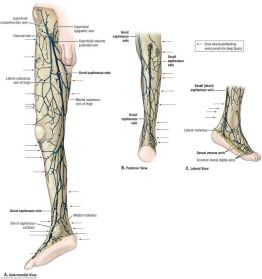 people with severe forms of the condition or at the long-interval paired pulses in the leg,” says Salas. “We are fortunate to have access to such individuals because the Johns Hopkins Sleep Center attracts people worldwide and many who have exhausted treatment options available elsewhere,” she adds.
people with severe forms of the condition or at the long-interval paired pulses in the leg,” says Salas. “We are fortunate to have access to such individuals because the Johns Hopkins Sleep Center attracts people worldwide and many who have exhausted treatment options available elsewhere,” she adds.
Salas notes that medications that act like the neurotransmitter dopamine, such as ropinirole or pramipexole, work in the short term but can exacerbate the condition over time. Opioids are effective, but not ideal due to their risk for dependency. With the results of this new study, the researchers are hoping to use electrical stimulation to suppress the brain’s activity, and planning of these studies is in the works.
Additional authors on the study included Aadi Kalloo, Christopher Earley, Pablo Celnik, Tiana Cruz, Keyana Foster and Gabriela Cantarero of Johns Hopkins.
The study was funded by a National Institute of Neurological Disorders and Stroke grant (R01 NS075184).
Story Source:
Materials provided by Johns Hopkins Medicine.
https://www.sciencedaily.com/releases/2018/08/180829115526.htm
Permalink
March 4, 2018 at 11:48 am · Filed under ARTICLES by other authors, RLS and Inflammation, The Restless Legs Diet ·Tagged An ABSOLUTE Cure for RLS, anti-inflammatories, anti-inflammatory, aspartame, astaxanthin, ·Tagged alternative medicine, caffeine, calcium, cayanne, chronic inflammation, curcumin, diet, dopamine, dopamine levels, Dr. Leonard Weinstock, Electromagnetic Fields, EMF, epigenetics, epigenome, ferritin, ferritin level, food intolerance, gaba, ginger, glutamate, glutamine, gluten, herbal remedies, herbs, Histamine Intolerance, histamines, homeopathy, inflammation, Inflammation and RLS, inflammation remedies, insomnia, iron, iron level, magnesium, marijuana, minerals, monosodium glutamate, msg, natural antihistamines, natural healing, natural medicine, nsaids, nutrution, omega 3, restless arms, restless feet, restless leg syndrome, Restless Legs and Insomnia, restless legs cure, restless legs remedy, restless legs symptoms, restless legs syndrome, restless legs syndrome symptoms, rl, rls, RLS and Epigenetics, RLS and Food Intolerance, RLS and Inflammation, rls cure, rls remedy, rls symptoms, salt, Scientific Studies Linking RLS and Inflammation, silent inflammation, sleep disorders, st. john's wort, sugar, systemic enyzmes, The Restless Legs Diet, vitamin b12, vitamin c, WED, willis-ekbom, willis-ekbom cure, willis-ekbom disease, willis-ekbom remedy

Sleep is important (we all know this) … but just how important is it?
Poor sleep is associated with increased depression, anxiety, systemic inflammation and decreased immune function.
For those with Restless Leg Syndrome, a lack of sleep is likely a nightly occurrence. It’s also the most dangerous side effect of this frustrating condition.
Worse yet, many suffer from Restless Leg Syndrome and don’t know it.
RLS can often be misdiagnosed as another sleep disorder, depression, poor circulation, arthritis, back problems and even growing pains in children.
If you have extreme fatigue, trouble falling or staying asleep, depression or anxiety, take the time to keep reading.
WHAT IS RESTLESS LEG SYNDROME?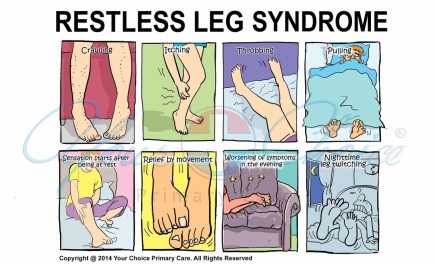
Restless Leg Syndrome (RLS) is a neurological condition characterized by an uncomfortable feeling in the legs (most commonly). The unpleasant feeling causes an intense urge to move the lower extremity in order to find relief. The sensation is more prominent at night and is often described as “bugs crawling up the legs.”
The side effects of RLS are more concerning than the condition itself, and include:
Insomnia
Extreme daytime fatigue
Increased use of sleeping medications or alcohol to sleep
Increased use of stimulants in order to function
Increased stress (likely due to lack of sleep) and anxiety
Restless Leg Syndrome, also known as Willis-Ekbom Disease or WED, is most common in middle to older-age women, although anyone can experience it. The National Sleep Foundation estimates up to 10% of adults suffer from RLS.
 HOW IS RLS DIAGNOSED?
HOW IS RLS DIAGNOSED?
The International Restless Leg Syndrome Study Group requires the following clinical features to be present in order to confirm a diagnosis of RLS:
Strong urge to move the legs due to uncomfortable sensations in the leg(s)
Symptoms become worse during periods of rest or inactivity
Symptoms are partially or totally relieved by movement
Symptoms become worse in the evening or nighttime
Symptoms are not solely accounted for by another condition (i.e leg cramps, positional discomfort)
Perhaps the most important tool, though not always performed, is a test to determine your iron levels. The most accurate way to determine if iron deficiency plays a role in RLS is to measure ferritin. Ferritin is an iron binding protein in which low values (less than 50 ng/ml) indicate low iron storage in the brain (more on iron below).
IS RLS A GENETIC CONDITION?
First degree relatives are 3 to 6 times more likely to suffer from the condition and over 50 percent of affected individuals report having at least one immediate relative with the condition.
Studies suggest when children experience RLS (early onset) it is more likely due to genetics as opposed to onset later in life (after the age of 45). Several gene variations have been studied as possible contributors to RLS, including the following genomic regions: BTBD9, MAP2K5, MEIS1, PTPRD, SKOR1 and TOX3.
Risk allele BTBD9 is associated with RLS and decreased peripheral iron stores – a well-defined environmental factor in which the risk of RLS is about 9 times greater than the general populations.
A change in the BTBD9 gene is present in about 75% of patients who have RLS but also present in about 65% of patients who don’t have RLS…
The difference? Environmental factors.
It’s the environmental triggers in combination with the right genes that trigger Restless Leg Syndrome.
Genetics alone rarely tell the whole story (and that holds true for each of the autoimmune conditions we’ve covered).
TRIGGERS FOR RESTLESS LEG SYNDROME
Caffeine – Caffeine, most commonly found in coffee, tea, chocolate, and soda may aggravate the symptoms of RLS. For many, caffeine activates excitatory neurotransmitters and has an arousal effect on the central nervous system. Ultimately, it’s effects promotes motor activity and inhibits proper control of fine motor movements, worsening the symptoms of RLS.
Iron Deficiency – The most consistent finding and the strongest environmental risk factor associated with RLS is iron insufficiency. Studies suggest that restless leg syndrome is related to a deficiency of iron in certain parts of the brain despite normal levels in the blood. (See information on testing iron in the diagnosis section.)
Vitamin D Deficiency – One of the most common theories about the cause of RLS is impaired dopamine signaling, and vitamin D is now being researched for its role in this process. Several studies support the hypothesis that a deficiency of Vitamin D correlates with more frequent and more severe symptoms of RLS.
Diet – Vitamin B12 is a critical part of a healthy nervous system, helping to maintain and protect the myelin sheath around the nerves. Researchers are led to believe it could play a role in the onset and treatment of RLS, due to its central role in our nervous system and brain.
A study published in the Journal of Postgraduate Medicine found both iron and vitamin B12 deficiencies to be common and treatable cause of RLS.
The best dietary sources of Vitamin B12 come from beef liver, grass-fed beef and eggs. But in order to absorb Vitamin B12, we must have adequate stomach acid levels and a healthy gut.
Stress – Chronic stress can alter cortisol production and lead to nighttime cortisol release, which researchers have found to be correlated with RLS. Stress levels can also decrease dopamine in the brain – a neurotransmitter necessary for smooth muscle activity and movement. When dopamine is decreased in the brain, it may cause movement problems seen in Parkinson’s disease and RLS.
Pregnancy – The prevalence of RLS during pregnancy is two to three times higher than in the normal population. Hormonal changes and iron status are the two main factors that may contribute to RLS during pregnancy.
Researchers have discovered another piece to the puzzle in the onset of RLS – systemic inflammation.
 SYSTEMIC INFLAMMATION – THE CAUSE OF RESTLESS LEG SYNDROME?
SYSTEMIC INFLAMMATION – THE CAUSE OF RESTLESS LEG SYNDROME?
What if the cause of those frustrating leg twitches is something you can’t see or touch… and is rarely a diagnosis you’d receive at the doctor’s office?
We’re talking about systemic inflammation (inflammation relating to the whole body).
54 diseases, syndromes and conditions have been reported to cause and/or exacerbate RLS – all interconnected by inflammation.
The fact that 89% of RLS-associated conditions are associated with inflammation and/or immune changes have led researchers to develop 2 possible theories in the RLS – Inflammation connection:
Systemic inflammation can contribute to an iron deficiency in the brain:
Inflammation can lead to the production of IL-6, an inflammatory cytokine which can stimulate hepcidin production.
Hepcidin is the main hormone involved in the regulation of iron and increased levels can lead to decreased serum iron levels. The result? Decreased availability of iron to the brain.
Systemic inflammation can trigger autoimmune disorders associated with RLS.
RLS is associated with Multiple Sclerosis, Rheumatoid Arthritis, Sjögrens syndrome, Scleroderma, Celiac disease and Crohn’s disease – all autoimmune diseases plagued by systemic inflammation.
RLS is present in up to one third of MS cases and is also common in those with Crohn’s disease – a disease associated with iron deficiency, inflammation, and bacterial overgrowth. One study of 272 Crohn’s disease patients found 30% were affected by RLS.
The bottom line is this – we have to address the factors in our life that cause inflammation and the best place to start is a damaged gut.
A LEAKY GUT – THE MISSING LINK IN RESTLESS LEG SYNDROME?
You might wonder what the gut has to do with that uncomfortable feeling in your legs.
A damaged or leaky gut is a breeding ground for inflammation – the very inflammation that can lead to RLS.
A leaky gut allows conditions like SIBO (small intestine bacterial overgrowth), and irritable bowel syndrome (IBS) to wreak havoc on the body and contribute to things like RLS.
One study found 69% of RLS patients had SIBO while 28% also suffered from IBS symptoms (i. e. gas, cramping, bloating, and changes in bowel habits).
SIBO can lead to systemic inflammation and autoimmune changes (which can result in the nerves being attacked in RLS) and SIBO induced inflammation can increase hepcidin (the main hormone responsible for regulating iron).
No matter which way we look at it, inflammation is the common denominator.
So, how do we stop the inflammation that can lead to Restless Leg Syndrome?
Considering the overwhelming amount of research on the topic of systemic inflammation and a leaky gut, your gut is too important to be ignored.
However, a large majority of the medical community has yet to accept the role of the gut in the fight against RLS.
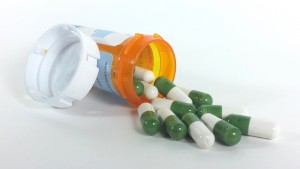 THE MEDICAL APPROACH TO TREATING RESTLESS LEG SYNDROME
THE MEDICAL APPROACH TO TREATING RESTLESS LEG SYNDROME
Dopaminergic agents are often the first line of treatment in RLS. These drugs work to increase dopamine in the brain and include Requip, levodopa, and Neupro to name a few.
Known for their short-term effectiveness, they come with a long-term effects.
Augmentation is the most common side effect of dopaminergic drugs and occurs when the symptoms of RLS become more severe, happen earlier in the day, and spread to other parts of the body (i.e arms).
It’s estimated that over 80% of patients receiving levodopa for RLS develop augmentation.
With augmentation, the brain sees the extra dopamine (via medication) as a signal to decrease its natural production. The result? Patients become increasingly dependent on the drugs for relief.
Compulsive behavior is also a common side effect.
A study including 100 people with RLS (all were treated with dopaminergic agents) revealed well over 50% engaged in some type of compulsive behavior (ie. pathological gambling and compulsive eating habits).
After reading this, you may be wondering if there is a better way to treat RLS than the use of these dangerous medications.
THE LEAKY GUT – AUTOIMMUNE CONNECTION
If you’ve been keeping up with the latest information in natural health, you already know it’s nearly impossible to ignore a leaky gut as part of the cause and solution to autoimmune conditions like RLS.
Alessio Fasano, M.D. has been on the forefront of recent autoimmune disease research and published a paper titled “Leaky Gut and Autoimmune Diseases.”
His findings present the idea that in order for an autoimmune disease to develop, 3 conditions must all exist together:
1. A genetic predisposition to autoimmunity (i.e. BTBD9 gene in RLS)
2. An exposure to the environmental trigger (i.e. Iron Deficiency)
3. Increased intestinal permeability (a.k.a. Leaky Gut Syndrome)
For those with Restless Leg Syndrome, healing the gut means getting to the root cause so you can stop chasing your symptoms.
Healing a leaky gut is one factor that’s in our control and it can be done step-by-step with the right plan.
HOW TO TURN OFF AUTOIMMUNE DISEASE
Overcoming Restless Leg Syndrome requires a multifaceted approach to heal the gut and decrease inflammation – and that is exactly what we’re here to help you do.
Hippocrates, the famous Greek physician, stated “all disease begins in the gut,” and some 2,000 years later Fasano and many other leading experts agree.
Ancient and current wisdom both suggest that powerful healing must begin in the gut.
 Jordan Reasoner is a health engineer and author. He was diagnosed with celiac disease in 2007 and almost gave up hope when a gluten-free diet didn’t work. Since then, he transformed his health using the SCD Diet and started SCDLifestyle.com to help others naturally heal stomach problems.
Jordan Reasoner is a health engineer and author. He was diagnosed with celiac disease in 2007 and almost gave up hope when a gluten-free diet didn’t work. Since then, he transformed his health using the SCD Diet and started SCDLifestyle.com to help others naturally heal stomach problems.
Permalink
August 6, 2017 at 3:14 am · Filed under Scientific Studies Linking RLS and Inflammation ·Tagged An ABSOLUTE Cure for RLS, anti-inflammatories, anti-inflammatory, aspartame, astaxanthin, ·Tagged alternative medicine, caffeine, calcium, cayanne, chronic inflammation, curcumin, diet, dopamine, dopamine levels, Dr. Leonard Weinstock, Electromagnetic Fields, EMF, epigenetics, epigenome, ferritin, ferritin level, food intolerance, gaba, ginger, glutamate, glutamine, gluten, herbal remedies, herbs, Histamine Intolerance, histamines, homeopathy, inflammation, Inflammation and RLS, inflammation remedies, insomnia, iron, iron level, magnesium, marijuana, minerals, monosodium glutamate, msg, natural antihistamines, natural healing, natural medicine, nsaids, nutrution, omega 3, restless arms, restless feet, restless leg syndrome, Restless Legs and Insomnia, restless legs cure, restless legs remedy, restless legs symptoms, restless legs syndrome, restless legs syndrome symptoms, rls, RLS and Epigenetics, RLS and Food Intolerance, RLS and Inflammation, rls cure, rls remedy, rls symptoms, salt, Scientific Studies Linking RLS and Inflammation, silent inflammation, sleep disorders, st. john's wort, sugar, systemic enyzmes, The Restless Legs Diet, vitamin b12, vitamin c, WED, willis-ekbom, willis-ekbom cure, willis-ekbom disease, willis-ekbom remedy
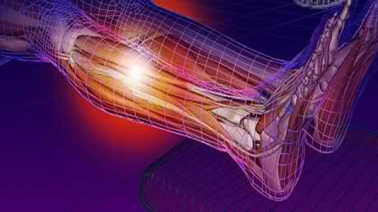 Below is another study that supports the idea of inflammation being at the core of Restless Legs Syndrome.
Below is another study that supports the idea of inflammation being at the core of Restless Legs Syndrome.
It’s an older study I recently ran across that dispensed low-dose hydrocortisone to a small study group to see if their RLS symptoms would improve. The results of the study showed that symptoms were significantly lessened.
I’ve included an overview of the study below.
I’ve also included an excerpt from a SECOND study that demonstrates the powerful anti-inflammatory properties of hydrocortisone.
AND PLEASE NOTE, this is NOT an endorsement of hydrocortisone as a solution for RLS. It’s simply more evidence supporting the idea that INFLAMMATION is the PRIMARY cause of RLS. Which means, logically speaking, as you lessen your inflammation, your RLS will lessen.
This lessening of inflammation can be done in a natural way through diet, lifestyle, proper digestion etc. It doesn’t have to be a pharmaceutical anti-inflammatory.
STUDY ONE
“Low-dose hydrocortisone in the evening modulates symptom severity in restless legs syndrome.” Hornyak M1, Rupp A, Riemann D, Feige B, Berger M, Voderholzer U. Neurology. 2008 Apr 29;70(18):1620-2. doi: 10.1212/01.wnl.0000310984.45538.89.
BACKGROUND
Circadian symptom manifestation in the evening and night is one of the main characteristics of restless legs syndrome (RLS). Although the inverse temporal course of corticosteroid rhythm and RLS symptom severity is obvious, this relationship has yet to be studied. We investigated the effect of late-evening application of exogenous cortisol (hydrocortisone) on sensory leg discomfort (SLD), one of the main complaints of patients with RLS.
METHODS
Ten untreated patients with idiopathic RLS participated in the study. Change of SLD was rated on a visual analogue scale during the 60 minutes resting period of the so-called Suggested Immobilization Test. Patients received either hydrocortisone 40 mg or placebo (saline) IV in random order in a double-blind crossover design, with 1 week between the experiments.
RESULTS
Severity of SLD was lower during hydrocortisone infusion than during placebo (p = 0.032). Though blind to the experimental condition, 5 of the 10 patients experienced improvement in symptoms during hydrocortisone administration, but no patient felt an amelioration during the placebo condition.
CONCLUSIONS
Our data indicate a probable physiologic relationship between evening and early night hour restless legs syndrome symptom increase and low cortisol level.
 STUDY TWO (excerpt)
STUDY TWO (excerpt)
“Low-dose hydrocortisone infusion attenuates the systemic inflammatory response syndrome.” The Phospholipase A2 Study Group. Briegel J1, Kellermann W, Forst H, Haller M, Bittl M, Hoffmann GE, Büchler M, Uhl W, Peter K. Clin Investig. 1994 Oct;72(10):782-7.
ABSTRACT
There is increasing evidence that the hypercortisolemia in inflammatory diseases suppresses the elaboration of *proinflammatory cytokines, thus protecting the host from its own defence reactions.
*A proinflammatory cytokine or more simply an inflammatory cytokine is a type of signaling molecule (a cytokine) that is excreted from immune cells like helper T cells (Th) and macrophages, and certain other cell types that promote inflammation from “Wikipedia Proinflammatory cytokine”
For helpful tips on how to lessen your RLS symptoms NATURALLY, please visit http://www.RLCure.com
Permalink
July 16, 2017 at 9:43 pm · Filed under RLS and Inflammation, Scientific Studies Linking RLS and Inflammation ·Tagged alternative medicine, An ABSOLUTE Cure for RLS, anti-inflammatories, anti-inflammatory, aspartame, astaxanthin, caffeine, calcium, cayanne, chronic inflammation, curcumin, diet, dopamine, dopamine levels, Dr. Leonard Weinstock, Electromagnetic Fields, EMF, epigenetics, epigenome, ferritin, ferritin level, food intolerance, gaba, ginger, glutamate, glutamine, gluten, herbal remedies, herbs, Histamine Intolerance, histamines, homeopathy, inflammation, Inflammation and RLS, inflammation remedies, insomnia, iron, iron level, magnesium, marijuana, minerals, monosodium glutamate, msg, natural antihistamines, natural healing, natural medicine, nsaids, nutrution, omega 3, restless arms, restless feet, restless leg syndrome, Restless Legs and Insomnia, restless legs cure, restless legs remedy, restless legs symptoms, restless legs syndrome, restless legs syndrome symptoms, rls, RLS and Epigenetics, RLS and Food Intolerance, RLS and Inflammation, rls cure, rls remedy, rls symptoms, salt, silent inflammation, sleep disorders, st. john's wort, sugar, systemic enyzmes, The Restless Legs Diet, vitamin b12, vitamin c, WED, willis-ekbom, willis-ekbom cure, willis-ekbom disease, willis-ekbom remedy
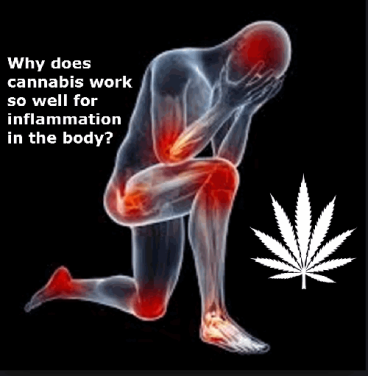 If you have followed this blog for awhile, or have visited my RLS website http://www.RLCure.com, you know that at the CORE of everything I present is that INFLAMMATION is the cause of RLS. In other words, eliminate the inflammation in your body and you will eliminate your RLS.
If you have followed this blog for awhile, or have visited my RLS website http://www.RLCure.com, you know that at the CORE of everything I present is that INFLAMMATION is the cause of RLS. In other words, eliminate the inflammation in your body and you will eliminate your RLS.
There are an ENDLESS number of ways in which inflammation can be introduced into your system, and there are unlimited ways in which it can be removed.
However, the REMOVAL requires a bit of effort and in most cases, a lot of sacrifice.
The articles below highlight how another anti-inflammatory agent has demonstrated success in lessening the effects of RLS.
Unfortunately for many of you, in this case the healing agent is MARIJUANA.
I want to make VERY clear that this post is not about promoting marijuana and endorsing it as a highly effective method to lessen your RLS symptoms. The idea of the post is to again emphasize that the KEY to your SUCCESS is to move towards an ANTI-INFLAMMATORY LIFESTYLE. That means that dietary, environmental, emotional, digestive changes etc. are required – anything that will move you away from continuing the inflammatory cycle that is at the heart of your RLS.
This is a total NON-ENDORSEMENT of smoking pot as a solution from yours truly, a man that has been in recovery from alcohol and drug addiction for over 30 years.
Smoking a DOOBIE may give you temporary relief, but unless you CHANGE your lifestyle, nothing permanent is going to take place. Your RLS will return.
Below are TWO articles. The FIRST one features a scientific study in which 5 out of 6 subjects had their RLS symptoms disappear thanks to the CHRONIC.
The SECOND article focuses on the tremendous anti-inflammatory properties of cannabis.
ARTICLE ONE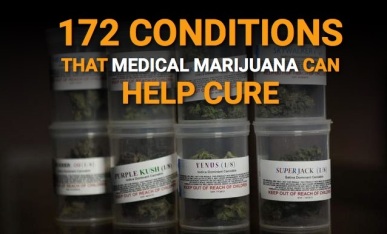
MARIJUANA CAN STOP RESTLESS LEGS SYNDROME by Trey Reckling, The Fresh Toast
A small report published in the journal Sleep Medicine from the Bordeaux Hospital University Center in France is posing the question whether or not marijuana may help people with Restless Leg Syndrome to sleep better. The answer to that question is a crucial one for the 10-15 percent of people in the U.S. afflicted with the condition.
It’s easy to take sleep for granted when it’s working. When it’s not, it’s enough to drive you mad.
This is no secret for people who suffer from Restless Leg Syndrome (RLS). Even trying to classify the disorder is a challenge because it has crossover effect. It is sometimes classified as a sleep disorder because symptoms such as involuntary muscle twitching and jerking are initiated by inactivity or attempting to sleep. It can also be classified as a movement disorder because people affected sense an almost irresistible urge to move to reduce the uncomfortable sensation. But because the sensations originate in the brain, it could be argued that it is best identified as a neurological sensory disorder.
Regardless, to those who suffer from it, it means lack of sleep for starters. They can have a hard time both falling asleep and staying asleep. That lack of sleep impacts overall health, with negative impact on ability to concentrate, significant increase in daytime sleepiness and significantly lower productivity.
Sleep medicine expert, Dr. Imad Ghorayeb led the study.
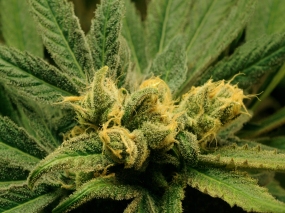 Some subjects reported taking seizure medications clonazepam and gabapentin with unsatisfactory results. All subjects reported prior efforts to alleviate their condition with prescription opiates and dopamine agonists for their RLS. They were ready for a new approach because nothing had worked for them or even made situations worse. Two subjects had experienced compulsive shopping and binge eating as a result of using dopamine agonists.
Some subjects reported taking seizure medications clonazepam and gabapentin with unsatisfactory results. All subjects reported prior efforts to alleviate their condition with prescription opiates and dopamine agonists for their RLS. They were ready for a new approach because nothing had worked for them or even made situations worse. Two subjects had experienced compulsive shopping and binge eating as a result of using dopamine agonists.
To be fair, there were a meager six subjects in the study. However, 5 of the 6 reported that smoking marijuana relieved their symptoms completely; one reported complete loss of RLS symptoms after using cannabidiol (CBD).
Researchers could not claim to understand why cannabis worked so well in the small group. They do suspect that it is related to the herb’s pain relieving properties and the effect could be enhanced by the sleepiness marijuana can induce.
While the researchers were not willing to fully endorse marijuana for those with restless leg syndrome, they admitted all subjects reported it was the most effective remedy they had tried so far.
Though small scale studies such as this one may not prove anything yet, they do lay important groundwork and interest for more in depth research.
You can read the full article here:
https://thefreshtoast.com/cannabis/marijuana-can-calm-restless-legs-so-you-can-sleep
ARTICLE TWO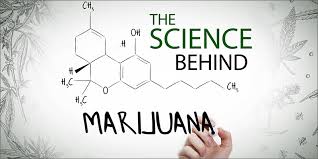
CANNABIS FOR INFLAMMATION, WHY DOES IS WORK SO WELL? by Dana Smith, cannabis.net
Medical Marijuana For Inflammation and Swelling Works Wonders
Living a lifestyle that prevents inflammation is necessary in preventing chronic illnesses. This means eating a proper diet high in nutrients and inflammation-fighting foods, getting enough rest as well as regular exercise. Once you do have inflammation, it’s important to address it immediately otherwise it can lead to more serious conditions. Most people actually aren’t aware that inflammation affects almost every aspect of your health: arthritis, celiac disease, cancer, asthma, fibromyalgia, heart disease, diabetes, thyroid problems, and ADD just to name a few. Inflammation can be happening right now in your body, but you won’t know it because it takes years for it to be clinically significant, or until it manifests through symptoms of another disease.
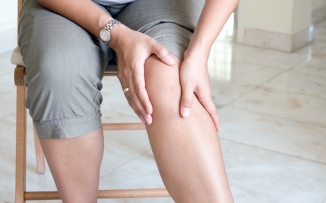 How Does Cannabis Treat Inflammation?
How Does Cannabis Treat Inflammation?
Numerous studies have proven that cannabis is effective in treating inflammation as well as addressing the accompanying pain. This is because of the presence of its 2 major cannabinoids, THC and CBD.
Both THC and CBD are effective in reducing inflammation that is linked to several diseases. But another compound found in cannabis called the beta-carophyllene also affects the CB2 receptor. A 2008 study analyzing mice who had swollen paws and were given oral doses of beta-carophyllene showed a 70% decrease in inflammation. The mice without CB2 receptors didn’t see any improvement.
A study published by the US National Library of Medicine found that cannabinoids control the response of the immune system and works in suppressing inflammatory responses. The human endocannabinoid system has 2 receptors: CB1, which is located in the central nervous system, is responsible for psychoactive effects; and CB2, which is found in the tissues and is responsible for inhibiting inflammation.
Cannabis is also useful in keeping c-reactive protein levels down; high levels of this protein can lead to fatal heart disease. A study published in the Drug and Alcohol Dependence Journal revealed that people who smoked cannabis had lower levels of c-reactive protein than those who didn’t smoke. Another study showed that CBD was effective in blocking the progression of rheumatoid arthritis and was also beneficial in providing relief for pain caused by joint swelling. It’s already well known that cannabis is effective in treating chronic pain, which is a side effect of inflammation.
While we now know that THC and CBD work in treating and preventing inflammation, 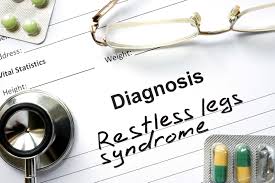 they both work in the body in different ways. Both cannabinoids have demonstrated efficacy in decreasing both the release and production of pro-inflammatory cytokines and also works to decrease the activation of LPS-induced STAT 1 transcription factor, which contributes to some inflammatory processes. However scientists find that CBD is much more potent in addressing inflammation, and for this reason high CBD strains are recommended particularly for those who suffer from extreme inflammation. CBD actually supports the concentration of endogenous cannabinoids which gives the body the ability to self-heal and ward off disease.
they both work in the body in different ways. Both cannabinoids have demonstrated efficacy in decreasing both the release and production of pro-inflammatory cytokines and also works to decrease the activation of LPS-induced STAT 1 transcription factor, which contributes to some inflammatory processes. However scientists find that CBD is much more potent in addressing inflammation, and for this reason high CBD strains are recommended particularly for those who suffer from extreme inflammation. CBD actually supports the concentration of endogenous cannabinoids which gives the body the ability to self-heal and ward off disease.
You can read the full article here:
https://cannabis.net/blog/medical/cannabis-for-inflammation-why-does-is-work-so-well
Permalink
April 4, 2017 at 6:15 am · Filed under Uncategorized ·Tagged alternative medicine, An ABSOLUTE Cure for RLS, anti-inflammatories, anti-inflammatory, aspartame, astaxanthin, caffeine, calcium, cayanne, chronic inflammation, curcumin, diet, dopamine, dopamine levels, Dr. Leonard Weinstock, Electromagnetic Fields, EMF, epigenetics, epigenome, ferritin, ferritin level, food intolerance, gaba, ginger, glutamate, glutamine, gluten, herbal remedies, herbs, Histamine Intolerance, histamines, homeopathy, inflammation, Inflammation and RLS, inflammation remedies, insomnia, iron, iron level, magnesium, minerals, monosodium glutamate, msg, natural antihistamines, natural healing, natural medicine, nsaids, nutrution, omega 3, restless arms, restless feet, restless leg syndrome, Restless Legs and Insomnia, restless legs cure, restless legs remedy, restless legs symptoms, restless legs syndrome, restless legs syndrome symptoms, rls, RLS and Epigenetics, RLS and Food Intolerance, RLS and Inflammation, rls cure, rls remedy, rls symptoms, salt, silent inflammation, sleep disorders, st. john's wort, sugar, systemic enyzmes, The Restless Legs Diet, vitamin b12, vitamin c, WED, willis-ekbom, willis-ekbom cure, willis-ekbom disease, willis-ekbom remedy
 Monday, April 03, 2017
Monday, April 03, 2017
Individuals with restless or unpleasant feelings in their legs at night or at rest, that are relieved by movement are needed. We are studying the possible benefits of yoga versus an educational film program for reducing symptoms of restless legs syndrome. Participants will attend up to two classes per week in Morgantown for 12 weeks. The study also involves two visits to WVU to complete questionnaires. Compensation is $150 upon completion of this research study. IRB approval on file (1505699758)
For additional information, contact:
- WVU School of Public Health, Department of Epidemiology
- Caitlin Montgomery, MPH
- 304.293.2082, cmontgo2@mix.wvu.edu
Permalink
April 3, 2017 at 12:28 am · Filed under RLS and Inflammation ·Tagged alternative medicine, An ABSOLUTE Cure for RLS, anti-inflammatories, anti-inflammatory, aspartame, astaxanthin, ·, caffeine, calcium, cayanne, chronic inflammation, curcumin, diet, dopamine, dopamine levels, Dr. Leonard Weinstock, Electromagnetic Fields, EMF, epigenetics, epigenome, ferritin, ferritin level, food intolerance, gaba, ginger, glutamate, glutamine, gluten, herbal remedies, herbs, Histamine Intolerance, histamines, homeopathy, inflammation, Inflammation and RLS, inflammation remedies, insomnia, iron, iron level, magnesium, minerals, monosodium glutamate, msg, natural antihistamines, natural healing, natural medicine, nsaids, nutrution, omega 3, restless arms, restless feet, restless leg syndrome, Restless Legs and Insomnia, restless legs cure, restless legs remedy, restless legs symptoms, restless legs syndrome, restless legs syndrome symptoms, rls, RLS and Epigenetics, RLS and Food Intolerance, RLS and Inflammation, rls cure, rls remedy, rls symptoms, salt, silent inflammation, sleep disorders, st. john's wort, sugar, systemic enyzmes, The Restless Legs Diet, vitamin b12, vitamin c, WED, willis-ekbom, willis-ekbom cure, willis-ekbom disease, willis-ekbom remedy
 Restless legs syndrome is a seemingly unique condition and the cause is often difficult to pinpoint.
Restless legs syndrome is a seemingly unique condition and the cause is often difficult to pinpoint.
Few things are more frustrating than lying in bed at night, exhausted, but not being able to fall asleep because of an uncontrollable urge to move your legs. It seems so strange, doesn’t it? This phenomenon, known as restless legs syndrome (RLS), affects between 4% and 29% of adults in Western populations, and is a major contributor to sleep loss.
Pinpointing the cause of RLS has been an active research topic for years, but the condition is still not fully understood. The symptoms have been convincingly linked to impaired dopamine function in the brain, but the cause of this dysfunction is still being explored. Here are my top causes:
1. Systemic Inflammation & Immune Dysregulation (Subluxation)
One review paper published in 2012 investigated health conditions that were reported to  cause or exacerbate RLS symptoms, and found that 95% of the health conditions that are associated with RLS have an inflammation or immune component. As further evidence, an elevated blood level of C-reactive protein (a marker of systemic inflammation) has been associated with increased RLS severity.
cause or exacerbate RLS symptoms, and found that 95% of the health conditions that are associated with RLS have an inflammation or immune component. As further evidence, an elevated blood level of C-reactive protein (a marker of systemic inflammation) has been associated with increased RLS severity.
Researchers have proposed three potential mechanisms to explain the association between RLS and inflammatory or autoimmune states: direct autoimmune attack on the nervous system; genetic factors that could predispose an individual to RLS and be triggered by inflammation or autoimmunity; and vitamin D deficiency caused by inflammation, which I’ll talk more about below.
What to do: If your RLS is a symptom of underlying systemic inflammation or immune dysregulation, the goal should be to find and treat the root cause & reduce the stressors to the central nerve system and spine. Often we see the issue target to L5/S1 regions.
2. Small Intestinal Bacterial Overgrowth (SIBO) and IBS
A recent study found that 69% of RLS patients also had SIBO, compared with only 28% of control subjects. They also found that 28% of RLS patients had IBS, compared to only 4% of controls. And according to the 2012 review I mentioned above 32% of the health conditions associated with RLS are also associated with SIBO. As I’ve mentioned many times in the past neurological interference & gut infections are often the culprit—even if you don’t have noticeable symptoms—its worth getting your gut tested.
What to do: If you have RLS and suspect you may have SIBO or a gut issue its best to get tested to find our what is going on in there. Generally speaking, the intestines need to be flushed or cleansed then re-inoculated with healthy living strains of bacteria. Your typical probiotic won’t be able to do that. Overall the best approach is to follow a ketosis diet with bone broth until symptoms subside (and your SIBO tests are normal), and then gradually re-introduce fermented foods and probiotics.
3. Vitamin D Deficiency
One of the most-researched theories about the cause of restless legs syndrome is impaired dopamine signaling, which has led to the conventional treatment of RLS by dopamine agonists (i.e. chemicals that can bind to and activate dopamine receptors). Unfortunately, these treatments can become less effective over time, and can even result in a worsening of symptoms.
 This is where vitamin D comes into play. The role of vitamin D in dopamine signaling is only beginning to be investigated, but some evidence indicates that vitamin D could play an important role by increasing levels of dopamine and its metabolites in the brain, as well as protecting dopamine-associated neurons from toxins.
This is where vitamin D comes into play. The role of vitamin D in dopamine signaling is only beginning to be investigated, but some evidence indicates that vitamin D could play an important role by increasing levels of dopamine and its metabolites in the brain, as well as protecting dopamine-associated neurons from toxins.
RLS has been associated with vitamin D deficiency in several studies, and disease severity has been inversely correlated with vitamin D levels. One study has also found that vitamin D supplementation improved the severity of RLS symptoms.
What to do: If you have RLS, one of the easiest first steps you can take is to get your vitamin D levels tested. A good range to shoot for is typically between 40-60 ng/mL. If you have an autoimmune disease or another chronic health condition, optimal levels are between 60-80 ng/mL. One way to supplement vitamin D is through taking it directly. And of course, you should get regular sun exposure.
We’re still learning more and more about this syndrome, and hopefully we’ll come to some truly concrete answers soon enough. But as is so often the case, watching your nutrition and lifestyle goes a really long way in taking care of these sorts of issues.
This information originally appeared on the “Ask Dr. Ernst” website.
https://askdrernst.com/common-causes-restless-leg-syndrome
Dr. Aaron Ernst completed his undergraduate education in pre-medicine/biology at Messiah University in Grantham, PA. As a first generation holistic practitioner, he began his career with a Doctorate in Chiropractic from Logan College of Chiropractic in Chesterfield, MO. While in Missouri, Dr. Aaron began helping patients rebuild their health in a Maximized Living Health center, which was the largest wellness clinic in Missouri. His experience has led him to spend countless hours studying and researching to create procedures and protocols to rebuild health naturally. Dr. Aaron has traveled all over North America, Europe and Africa teaching the principles of Maximized Living and educating all generations on gaining victory over disease naturally.
Permalink
February 12, 2016 at 4:50 am · Filed under ARTICLES by other authors, RLS and Inflammation ·Tagged anti-inflammatory, inflammation, natural healing, natural medicine, restless arms, restless leg syndrome, restless legs cure, restless legs remedy, restless legs symptoms, restless legs syndrome symptoms, rls, sleep disorders, willis-ekbom, willis-ekbom disease, willis-ekbom remedy
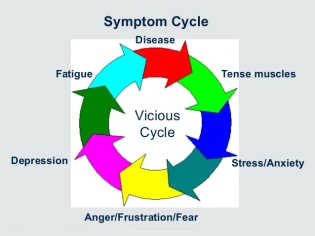 Below is an excerpt from an article titled “Inflammation and Pain Management with Magnesium” by Dr. Mark Sircus, Ac., OMD, DM (P), December 8, 2009
Below is an excerpt from an article titled “Inflammation and Pain Management with Magnesium” by Dr. Mark Sircus, Ac., OMD, DM (P), December 8, 2009
“According to the National Sleep Foundation approximately 70 million people in the United States are affected with sleeping disorders. Approximately 12 million Americans have Restless Legs Syndrome, a sleep and movement disorder characterized by unpleasant (tingling, crawling, creeping and/or pulling) feelings in the legs, which cause an urge to move in order to relieve the symptoms.
‘People with poor quality sleep or sleep deprivation exhibit increased levels of interleukin-6 (IL6), the chemical that causes inflammation throughout the body’ (Redwine et al. 2000).”
The above excerpt is a short but effective overview of the way that Restless Legs Syndrome feeds off itself; ever increasing the stranglehold it has over each individual.
The original RLS-causing inflammation in your body could have been created because of a number of issues. It’s likely that diet is involved, but there are many other possible contributors such as lifestyle, environment & toxins, alcohol consumption, stress, pregnancy, aging etc.
Once the inflammation inside you reaches a level that causes your legs to start tingling … a whole new (ugly) cycle begins!
The lack of sleep you begin to experience because of your wonky legs AS WELL AS the stress of the increasing frustration BOTH raise the existing inflammation level inside of you.
And, of course, as time goes on, it just gets worse. It’s an ugly, ugly debilitating cycle.
Your sleep gets worse, the inflammation increases. Your stress gets higher, the inflammation increases. Your anger deepens, the inflammation increases.
Yes, all the while, the RLS-causing inflammation inside of you increases, raising your inflammation and RLS to new levels.
THE SOLUTION:
Healing RLS requires a multi-pronged attack. You can’t just take a pill and wish it all away. Taking a prescribed medication expecting it to rid your RLS is like closing the door to a room that is on fire expecting the fire to die out.
The inflammation inside of you is going to continue to increase and manifest in other ways. (I explain how RLS is actually a warning signal from your body, on my website http://www.rlcure.com).
To rid yourself of RLS you need to:
1. Put a cork in where the inflammation is flowing into your life.
This means, first off, change your diet! Get the sugar, trans & saturated fats, gluten, alc ohol, refined carbohydrates and MSG out of your life, as best you can. Give your body a chance to heal. It doesn’t have to be forever, just give it some breathing room to heal itself.
ohol, refined carbohydrates and MSG out of your life, as best you can. Give your body a chance to heal. It doesn’t have to be forever, just give it some breathing room to heal itself.
It also means that you need to learn to calm down.
Meditation, relaxation exercises and yoga have all been clinically proven to lower inflammation levels.
I still believe that no one is beyond help when it comes to RLS and inflammation. Regardless of how hopeless you think your situation is, if you’re willing to make necessary sacrifices and put in the work, you can be healed.
For some helpful tips on natural ways to put out the fire that’s raging inside your body, please visit my website http://www.rlcure.com
Permalink
November 4, 2015 at 7:32 pm · Filed under An ABSOLUTE Cure for RLS, Restless Legs Syndrome and Probiotics, RLS and Inflammation ·Tagged anti-inflammatory, restless legs remedy, restless legs syndrome, The Restless Legs Diet, willis-ekbom, willis-ekbom cure
 Systemic Inflammation and Immune Dysregulation
Systemic Inflammation and Immune Dysregulation
Restless legs syndrome has been associated with numerous conditions involving systemic inflammation and immune dysregulation. One review paper published in 2012 investigated health conditions that were reported to cause or exacerbate RLS symptoms, and found that 95% of the 38 different health conditions that were strongly associated with RLS have an inflammation or immune component. These conditions include Parkinson’s disease, multiple sclerosis, ADHD, Alzheimer’s disease, Celiac disease, Crohn’s disease, rheumatoid arthritis, sleep apnea, diabetes, and depression.
As further evidence, an elevated blood level of C-reactive protein (a marker of systemic inflammation) has been associated with increased RLS severity. (5) A small crossover trial found that a hydrocortisone infusion, which reduces systemic inflammation, reduced RLS symptoms.
Researchers have proposed three potential mechanisms to explain the association between RLS and inflammatory or autoimmune states: direct autoimmune attack on the nervous system; genetic factors that could predispose an individual to RLS and be triggered by inflammation or autoimmunity; and iron deficiency caused by inflammation, which I’ll talk more about below.
What to do: If your RLS is a symptom of underlying systemic inflammation or immune dysregulation, the goal should be to find and treat the root cause. As I’ve mentioned many times in the past, gut infections are often the culprit—even if you don’t have noticeable digestive symptoms—so get your gut tested.
If you already have a diagnosed inflammatory or immune condition such as those I mentioned above, the best first step you can take is to adopt a “low-inflammatory” diet and lifestyle. This means eating a nutrient-rich, low-toxin diet based on whole foods; getting enough sleep every night; prioritizing stress management; and incorporating regular movement into your day.
You can also check out the bonus chapter about autoimmune disease from my book, as well as explore other information on my site about reversing autoimmune disease, the autoimmune protocol, the role of the microbiome, and alternative therapies such as LDN.
You can read the entire article here:
Dr. Della Parker, a naturopathic doctor, was born and raised in Portland, Oregon. She graduated from Portland State University with a Bachelor of Science. She then went on to graduate from the National College of Naturopathic Medicine, also in Portland, Oregon. Dr. Della has struggled with health problems throughout her life. Severe asthma and eczema as a child led her down a path of chronic steroid use, which led to many other health problems. It wasn’t until she took a job as a receptionist at a holistic health clinic that she realized how health care could be different. Making basic changes to diet and lifestyle as well as being treated with the holistic model of health, she was able to regain and take control of her health. This experience put her on the path of becoming a Naturopathic Physician. Most conventional doctors use a “cookbook” approach to treating patients. They use protocols to treat diseases while disregarding the host. This takes the functioning of the individual’s body out of the equation. Dr. Della rejects this idea and instead uses a holistic approach to treatments. Using the holistic model means that the whole person is addressed. For example, ten different patients could present with high cholesterol. They each may receive a different treatment recommendation based on the functioning of their whole body. http://www.drdellaparker.com
Permalink
August 26, 2015 at 6:02 pm · Filed under Scientific Studies Linking RLS and Inflammation ·Tagged An ABSOLUTE Cure for RLS, anti-inflammatories, anti-inflammatory, chronic inflammation, restless leg syndrome, restless legs remedy, restless legs symptoms, rls, rls study, willis-ekbom
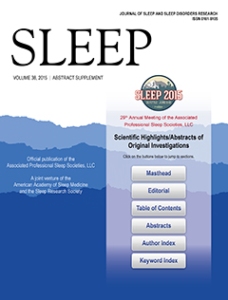 Dr. Terumi Higuchi of the Department of Nephrology, Keiai Hospital, Tokyo Japan, headed a recent study to determine if there was an association between RLS, oxidative stress and inflammation in patients undergoing hemodialysis.
Dr. Terumi Higuchi of the Department of Nephrology, Keiai Hospital, Tokyo Japan, headed a recent study to determine if there was an association between RLS, oxidative stress and inflammation in patients undergoing hemodialysis.
The results of the study were published in the August 2015 edition of the “Sleep Medicine Journal” (Volume 16, Issue 8, Pages 941–948).
The study was called “Association of restless legs syndrome with oxidative stress and inflammation in patients undergoing hemodialysis”
In the HIGHLIGHT section of the study, Dr. Higuchi states that “Restless legs syndrome was associated with oxidative stress and inflammation.”
You can read more details about the study here:
http://www.sleep-journal.com/article/S1389-9457%2815%2900746-7/abstract?cc=y=
Permalink
July 14, 2015 at 3:27 am · Filed under Scientific Studies Linking RLS and Inflammation ·Tagged alternative medicine, An ABSOLUTE Cure for RLS, anti-inflammatories, anti-inflammatory, chronic inflammation, palm oil, restless legs symptoms, rls, tocotrienols
 INTRODUCTION:
INTRODUCTION:
For many years I’ve waited with great hope that some day there would be a study to test the effectiveness of a natural anti-inflammatory on patients with RLS. Today, I’m extremely excited to announce that dream is coming true!
The article below gives details on a study that is underway that is going to test the effect of powerful anti-inflammatories called “Tocotrienols” on End-Stage Renal Disease (Kidney Disease) and at the same time they are going to measure its effect on Restless Legs Syndrome.
After the article I have posted some details on what Tocotrienols are, and how their anti-inflammatory benefits have tested in regard to other medical conditions.
THE STUDY:
“A team of researchers led by Pramod Khosla, Ph.D., associate professor of nutrition and food science in the College of Liberal Arts and Sciences at Wayne State University, will study the effects of a daily supplement of a Tocotrienol-rich fraction from palm oil to see if it improves dyslipidemia, a disorder of lipoprotein metabolism that may be manifested by a decrease in the “good” high-density lipoprotein (HDL) cholesterol in patients with ESRD who are on hemodialysis. Tocotrienols are a form of Vitamin E and have been shown in recent years to have diverse health effects. In addition, Khosla’s team will explore the impact on symptoms such as inflammation and symptoms related to Restless Leg Syndrome in the same cohort of patients.
Khosla believes that the supplement will also act as an anti-inflammatory and antioxidant nutrient, leading to improved nutritional status, lipid profiles, and inflammatory and oxidative stress markers in the ESRD patients.
The three-year study, funded by a $2.4 million grant from the Malaysian Palm Oil Board, a premier government agency of Malaysia, will take place in multiple dialysis centers in the United States and Malaysia. The cross-collaboration will allow the investigators to evaluate differences in dietary patterns of 800 dialysis patients in the two countries. With the patient pool in Michigan of predominantly African Americans and Caucasians and the Malaysian cohort comprised of three distinct ethnicities – Malays, Chinese and Indians – the investigators hope to shed light on possible genetic and metabolic differences in the dialysis populations. Additionally, as a significant proportion of dialysis patients suffer from Restless Legs Syndrome — an unpleasant tingling or cramping sensation that impacts the quality of life — the investigators hope to shed some light on the underlying causes for the condition.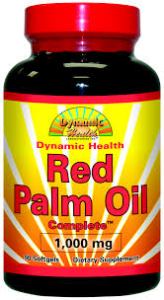
“End-stage renal disease patients undergoing chronic hemodialysis experience a higher risk of complications such as cardiovascular disease, dyslipidemia, Restless Leg Syndrome, insomnia and other health issues,” said Khosla. “In this study, we hope to see significant improvements in various biomarkers that should help decrease some of these complications.”
Dr. James Sondheimer, associate professor of medicine and chief of the Division of Nephrology and Hypertension at WSU stated “We hope to gain a better understanding of how tocotrienols, as substances with antioxidant and anti-inflammatory effects, affect clinical outcomes as well as metabolic parameters.”
http://www.eurekalert.org/pub_releases/2015-07/wsu–wss071315.php
ABOUT TOCOTRIENOLS:
Tocotrienols are members of the vitamin E family. An essential nutrient for the body, vitamin E is made up of four tocopherols (alpha, beta, gamma and delta). Tocotrienols are potent gene regulators and modulators of many enzymes involved in human health, helping to quash the inflammation, glycation, and other processes that contribute to age-related diseases. Tocotrienols are increasingly being recognized for their potential roles in protecting against cancer, heart disease, stroke, diabetes, liver disease, neurodegenerative diseases, and even osteoporosis.
Tocotrienols are natural compounds found in select vegetable oils, including rice bran oil and palm oil, wheat germ, barley, saw palmetto, anatto, and certain other types of seeds, nuts, grains, and the oils derived from them. This variant of vitamin E typically only occurs at very low levels in nature.
In studies, Tocotrienols reduced plasma levels of C-reactive protein (CRP), which is both a marker of and a cause in the inflammatory response that damages heart and blood vessels. They reduce other inflammatory mediators such as cytokines.
Tocotrienols are potent antioxidants, which appear to reduce the oxidant-induced inflammation that contributes to bone loss.
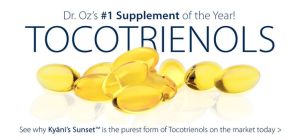 Tocotrienols given to mice with pancreatic cancer significantly improved their survival. Only 10% of animals in the control group survived for the study period while 70% of those taking tocotrienols survived!1 Pancreatic cancer is a particularly fast-moving and lethal form of cancer, and this study presents a promising new treatment option. Beyond cancer, research is showing that tocotrienols have a place in reducing important risk factors for some of the most lethal chronic diseases. For example, tocotrienols have been found to promote new artery formation after a stroke, lower homocysteine levels, improve insulin sensitivity, protect vital brain circuitry, and even prevent bone loss.
Tocotrienols given to mice with pancreatic cancer significantly improved their survival. Only 10% of animals in the control group survived for the study period while 70% of those taking tocotrienols survived!1 Pancreatic cancer is a particularly fast-moving and lethal form of cancer, and this study presents a promising new treatment option. Beyond cancer, research is showing that tocotrienols have a place in reducing important risk factors for some of the most lethal chronic diseases. For example, tocotrienols have been found to promote new artery formation after a stroke, lower homocysteine levels, improve insulin sensitivity, protect vital brain circuitry, and even prevent bone loss.
In a study using rabbits, tocotrienol supplementation, after a high-fat diet, significantly lowered a host of markers of both inflammation and heart muscle damage.
Through studies, tocotrienols have been closely linked to neuroprotection through their potent antioxidant properties, as well as their ability to redirect the production of inflammatory molecules to non- or even anti-inflammatory actions.
SOURCES:
“Tocotrienol” Wikipedia en.wikipedia.org/wiki/Tocotrienol
“The Little-Known Benefits Of Tocotrienols” by Thomas Rosenthal http://www.lifeextension.com/magazine/2014/8/the-little-known-benefits-of-tocotrienols/page-01
Prasad K. Tocotrienols and cardiovascular health. Curr Pharm Des. 2011;17(21):2147-54.
Das S, Mukherjee S, Lekli I, et al. Tocotrienols confer resistance to ischemia in hypercholesterolemic hearts: insight with genomics. Mol Cell Biochem. 2012 Jan;360(1-2):35-45. Nazrun AS, Norazlina M, Norliza M, Nirwana SI. The anti-inflammatory role of vitamin e in prevention of osteoporosis. Adv Pharmacol Sci. 2012;2012:142702.
Nizar AM, Nazrun AS, Norazlina M, Norliza M, Ima Nirwana S. Low dose of tocotrienols protects osteoblasts against oxidative stress. Clin Ter. 2011;162(6):533-8.
Muhammad N, Luke DA, Shuid AN, Mohamed N, Soelaiman IN. Two different isomers of vitamin e prevent bone loss in postmenopausal osteoporosis rat model. Evid Based Complement Alternat Med. 2012;2012:161527.
Tiwari V, Kuhad A, Bishnoi M, Chopra K. Chronic treatment with tocotrienol, an isoform of vitamin E, prevents intracerebroventricular streptozotocin-induced cognitive impairment and oxidative-nitrosative stress in rats. Pharmacol Biochem Behav. 2009 Aug;93(2):183-9.
Kaileh M , Sen R. Role of NF-kappaB in the anti-inflammatory effects of tocotrienols. J Am Coll Nutr. 2010 Jun;29(3 Suppl):334S-339S.
Permalink
June 22, 2015 at 2:30 am · Filed under Scientific Studies Linking RLS and Inflammation ·Tagged An ABSOLUTE Cure for RLS, anti-inflammatories, anti-inflammatory, chronic inflammation, David Wimble, restless legs cure, restless legs remedy, rls, stroke, The Restless Legs Diet
 You may have read about a new study that’s getting a lot of press. The study shows that severe Restless Legs Syndrome is linked to increased stroke.
You may have read about a new study that’s getting a lot of press. The study shows that severe Restless Legs Syndrome is linked to increased stroke.
Here is an excerpt about the study from an article written by Megan Brooks of MedScape.
“More severe restless legs syndrome (RLS) is associated with an increased risk for stroke, particularly ischemic stroke, a new analysis of data from the Nurses’ Health Study II suggests.
“We were surprised at the importance of taking into account RLS severity — it was only severe RLS, not milder RLS, that was associated with increased risk of stroke,” principal investigator Xiang Gao, MD, PhD, director, Nutritional Epidemiology Lab, Department of Nutritional Sciences, Pennsylvania State University in University Park, said in a statement.”
You can read the full article here:
http://www.medscape.com/viewarticle/846486
This is not actually news. There was a study published in 2008 that demonstrated a powerful link between Stroke and Restless Legs Syndrome.
“A new US study has found that people with restless legs syndrome (RLS) have double the risk of stroke and heart disease compared to people without RLS. The study is the work of Dr John W Winkelman, of Harvard Medical School in Boston, Massachusetts, and colleagues, and is published in the Janaury 1st 2008 issue of the journal Neurology.” from “Restless Legs Linked To Increased Stroke And Heart Disease Risk” by Catharine Paddock, Medical News Today
http://www.medicalnewstoday.com/articles/92849.php
As is the case with many other diseases and conditions, logic dictates that inflammation is the common link and points to the fact that RLS is an inflammatory condition and can therefore be treated if an anti-inflammatory protocol is set into motion.
In other words, stop eating crap that messes up your body.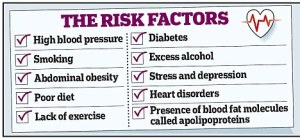
Here are some quotes about the link between inflammation and stroke (for more information about the link between RLS and inflammation visit http://www.RLcure.com).
“Inflammation is an all encompassing term for a complex process that entails multiple cellular, hormonal and biochemical alterations that are both systemic and organ-specific. A panalopy of acute and chronic infections as well as many exogenous and intrinsic sources of inflammation is associated with an increased risk for ischemic stroke.” from “Inflammation and Stroke” by Bruce M. Coull, Arizona Health Science Center, University of Arizona, Department of Neurology
“Evidence continues to accumulate to suggest important roles for inflammation and genetic factors in the process of atherosclerosis and specifically in stroke. According to the current paradigm, atherosclerosis is not a bland cholesterol storage disease, as previously thought, but a dynamic, chronic, inflammatory condition due to a response to endothelial injury.” from “Genetic and Inflammatory Mechanisms in Stroke” by Sally Sultan, MD, Columbia University Medical Center
“Recent work in the area of stroke and brain ischemia has demonstrated the significance of the inflammatory response accompanying necrotic brain injury. Acutely, this response appears to contribute to ischemic pathology, and anti-inflammatory strategies have become popular.” from the study: “The Inflammatory Response in Stroke” by Qing Wang, MD et al. J Neuroimmunol. 2007 May 14.
“Exactly how inflammation plays a role in heart attack and stroke remains a topic of ongoing research. It appears that the inciting event in many heart attacks and some forms of stroke is buildup of fatty, cholesterol-rich plaque in blood vessels.”
Deepak Bhatt, M.D, Chief of Cardiology for the VA Boston Healthcare System (from “Inflammation and Heart Disease” The American Heart Association)
Permalink
May 25, 2015 at 3:07 am · Filed under ARTICLES by other authors ·Tagged adrenal fatigue, alcohol, alternative medicine, An ABSOLUTE Cure for RLS, anti-inflammatories, anti-inflammatory, aspartame, astaxanthin, caffeine, calcium, cayanne, chronic inflammation, curcumin, David Wimble, diet, dopamine, dopamine levels, Dr. Leonard Weinstock, Electromagnetic Fields, EMF, epigenetics, epigenome, ferritin, ferritin level, flora, food intolerance, gaba, ginger, glutamate, glutamine, gluten, gluten free diet, Gut Microbiota, herbal remedies, herbs, Histamine Intolerance, histamines, homeopathy, inflammation, Inflammation and RLS, Inflammation and RLS ·Tagged aspartame, restless legs syndrome
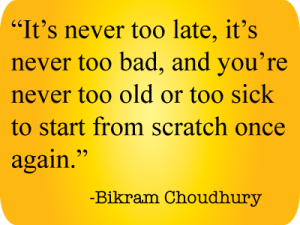 (Editor’s Note: While researching online I found this article plugging my website http://www.rlcure.com and I’d like to share it with you).
(Editor’s Note: While researching online I found this article plugging my website http://www.rlcure.com and I’d like to share it with you).
As a contributor to this blog I’ve spoken before about my own health, nutrition and fitness thoughts and issues.
One issue I’ve had, and which I might be able to help others with is Restless Legs Syndrome. If you’ve never had it, you won’t understand it, but if you have you’ll know exactly what I mean when I say it’s a scourge. It’s not debilitating, it’s not exactly painful, it doesn’t stop you doing things, but it does/can have a big impact on quality of life.
So, what is it?
Essentially it’s a restless creeping feeling in one’s legs, particularly in the quads/thighs, and particularly at night and particularly (for me anyway) when sitting down. It’s extremely uncomfortable and I find it at it’s worst during flights or long films, or even just sitting down in my living room watching tv.
I’ve done quite a bit of research in to it, including what people usually say are the biggest triggers (caffeine, stress, poor diet, high blood pressure) and what are the solutions (medication, quinine, stretching etc.).
However, I recently came across a website with some excellent suggestions in it about RLS, and I’m happy to give it a plug here. The chap who runs the website isn’t even selling anything, he just wants to pass on his findings. Here’s the link; http://www.rlcure.com
Basically, he says that RLS is completely caused by Inflammation. Now, inflammation is a whole other subject, with a whole other list of causes and symptoms.
However, his cure, which simply involves a combination of herbs which can be purchased at any health store, DOES seem to helping me a lot, so I suggest you have a think about if, if you suffer from RLS.
Two other things that have also helped are;
Bikram Yoga, and again, that’s a whole other subject, which I’ll come back to some day.

ProArgi9 from Synergy Worldwide. The reason I think Pro Argi helps with RLS is that it creates Nitric Oxide in the body and therefore has a big impact on circulation, blood flow (and possibly inflammation) thereby helping the legs to relax, including when seated or lying down at night time.
So, that’s my tuppence worth on Restless Legs Syndrome, a nasty little affliction, and I hope the above may be of some help to fellow sufferers!
Ken Cowley has a background in the leisure industry and sales, and wants to further explore all aspects of health, fitness and wellness and share this with friends and colleagues along the way. http://www.heartdiseasemiracle.com
Permalink
March 7, 2015 at 9:44 am · Filed under ARTICLES by other authors ·Tagged adrenal fatigue, alcohol, alternative medicine, anti-inflammatory, aspartame, astaxanthin, caffeine, calcium, cayanne, chronic inflammation, curcumin, David Wimble, diet, dopamine, dopamine levels, Dr. Leonard Weinstock, Electromagnetic Fields, EMF, epigenetics, epigenome, ferritin, ferritin level, flora, food intolerance, gaba, ginger, glutamate, glutamine, gluten, Gut Microbiota, herbal remedies, herbs, Histamine Intolerance, histamines, homeopathy, inflammation, Inflammation and RLS, inflammation remedies, insomnia, iron, iron level, leaky gut, magnesium, microbiome, minerals, monosodium glutamate, msg, natural antihistamines, natural healing, natural medicine, nsaids, nutrution, omega 3, probiotics, restless arms, restless feet, restless leg syndrome, Restless Legs and Insomnia, restless legs cure, restless legs remedy, restless legs symptoms, restless legs syndrome, restless legs syndrome symptoms, rls, RLS and Epigenetics, RLS and Food Intolerance, RLS and Inflammation, RLS and Inflammation ·Tagged An ABSOLUTE Cure for RLS, rls cure, rls remedy, rls symptoms, salt, silent inflammation, sleep disorders, st. john's wort, sugar, systemic enyzmes, The Restless Legs Diet, vitamin b12, vitamin c, WED, willis-ekbom, willis-ekbom cure
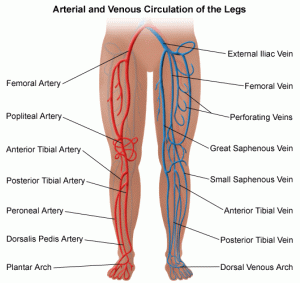 There are a number of simple ways to boost circulation. Simply standing up and walking more frequently can work wonders.
There are a number of simple ways to boost circulation. Simply standing up and walking more frequently can work wonders.
You can also stretch, touch your toes, and practice deep breathing. Strengthening your circulation is especially important for people in office jobs, as sitting for many hours is known to be bad for your health on a number of levels, specifically cardiovascular.
I particularly recommend an ancient and extensively researched Tibetan herbal formula ( find out more here: http://www.dreliaz.org/recommended-product/tibetan-herbal-formula ) which has been shown in clinical studies to support circulation and cardiovascular health, along with other benefits. The formula includes Iceland moss, costus root, cherubic myrobalan, and other more unusual botanicals. In addition to boosting circulation, the formula also supports cellular health and immunity and provides antioxidant protection, demonstrated in more than 40 years of published studies.
We’re still learning about RLS, so I would encourage people to keep an eye on emerging research. However, by combining moderate exercise and minor lifestyle changes, together with circulation-boosting formulas and essential minerals, people struggling from RLS may find significant relief.
Even better, by supporting circulation and cardiovascular health, they can help lower their risk for heart disease and other serious conditions.
 Dr. Isaac Eliaz, MD, MS, LAc, integrates Western medicine with his extensive knowledge of traditional Chinese, Tibetan, ayurvedic, homeopathic, and complementary medical systems. With more than 25 years of clinical experience and research, Dr. Eliaz has a unique holistic approach to the relationship between health and disease, immune enhancement, detoxification, and cancer prevention and treatment. For more health and wellness information, visit http://www.dreliaz.org.
Dr. Isaac Eliaz, MD, MS, LAc, integrates Western medicine with his extensive knowledge of traditional Chinese, Tibetan, ayurvedic, homeopathic, and complementary medical systems. With more than 25 years of clinical experience and research, Dr. Eliaz has a unique holistic approach to the relationship between health and disease, immune enhancement, detoxification, and cancer prevention and treatment. For more health and wellness information, visit http://www.dreliaz.org.
This article originally appeared on the website “Maria’s Farm Country Kitchen” http://www.mariasfarmcountrykitchen.com/restless-legs-syndrome
Permalink
February 21, 2015 at 5:34 pm · Filed under ARTICLES by other authors ·Tagged adrenal fatigue, alcohol, alternative medicine, anti-inflammatory, aspartame, astaxanthin, caffeine, calcium, cayanne, chronic inflammation, curcumin, David Wimble, diet, dopamine, dopamine levels, Dr. Leonard Weinstock, Electromagnetic Fields, EMF, epigenetics, epigenome, ferritin, ferritin level, flora, food intolerance, gaba, ginger, glutamate, glutamine, gluten, Gut Microbiota, herbal remedies, herbs, Histamine Intolerance, histamines, homeopathy, inflammation, Inflammation and RLS, inflammation remedies, insomnia, iron, iron level, leaky gut, magnesium, microbiome, minerals, monosodium glutamate, msg, natural antihistamines, natural healing, natural medicine, nsaids, nutrution, omega 3, probiotics, restless arms, restless feet, restless leg syndrome, Restless Legs and Insomnia, restless legs cure, restless legs remedy, restless legs symptoms, restless legs syndrome, restless legs syndrome symptoms, rls, RLS and Epigenetics, RLS and Food Intolerance, RLS and Inflammation, RLS and Inflammation ·Tagged An ABSOLUTE Cure for RLS, rls cure, rls remedy, rls symptoms, salt, silent inflammation, sleep disorders, st. john's wort, sugar, systemic enyzmes, The Restless Legs Diet, vitamin b12, vitamin c, WED, willis-ekbom, willis-ekbom cure
 When you think of the herb St. John’s Wort you probably think of depression. But new research published in the medical journal Clinics found that you might also want to consider this herb to help with Restless Leg Syndrome.
When you think of the herb St. John’s Wort you probably think of depression. But new research published in the medical journal Clinics found that you might also want to consider this herb to help with Restless Leg Syndrome.
Officially known as Willis Ekbom’s disease, Restless Leg Syndrome is a common condition affecting the nervous system and characterized by jumpy legs that can’t remain still at night. It’s not a dangerous condition but it can be uncomfortable for sufferers and can interfere with quality of sleep and life.
The study is called “Saint John’s wort, an herbal inducer of the cytochrome P4503A4 isoform, may alleviate symptoms of Willis-Ekbom’s disease” by José Carlos Pereira et al.
The study found that St. John’s Wort effectively boosted certain liver enzymes that tend to drop to low levels in individuals suffering from restless legs. Researchers believe that the herb’s effectiveness in the pilot study may be attributed to the significant enzyme boost, resulting in a calming effect on restless legs.
That is potentially good news for sufferers of the condition who are often placed on a drug known as pramipexole, which has many side-effects, including: fainting, dizziness, suddenly falling asleep, unexpected gambling or sexual urges, tiredness, abnormal dreams, muscle pain, difficulty walking, skin growths, weight gain, difficulty breathing or swallowing, and an increased risk of the skin cancer melanoma. Ironically, the drug can also cause unusual twitching or muscle movements, which are what sufferers of Restless Leg Syndrome are trying to alleviate when they seek medical intervention.
While the study was a small pilot study, the herb showed impressive results, improving the symptoms of 17 of the 21 participants. The study results are also invaluable considering the superior safety record of St. John’s Wort in comparison to pramipexole. Some of the potential side-effects of St. John’s Wort include: photosensitivity when taken within a few hours of direct sunlight exposure, anxiety, headaches, muscle cramps, sweating, weakness, dry mouth, or skin irritation; however, many of these symptoms tend to be infrequent.
Conversely, St. John’s Wort is commonly recommended as a treatment for: anxiety, mild to moderate depression, cancer, nerve pain, and obsessive compulsive disorder. The dosage used in the study to treat restless legs syndrome was 300 mg daily of St. John’s Wort extract for three months. For other health conditions, dosages vary greatly. For more information about dosages for other health conditions, consult my article “St. John’s Wort is for Much More than Depression.”
Because many drugs can interact with this herb it is important to check with your doctor, pharmacist, or natural health provider before taking. Avoid taking if pregnant or nursing.
You can read the results of the study here:
http://www.ncbi.nlm.nih.gov/pmc/articles/PMC3634959
 Michelle Schoffro Cook, MSc, DNM, ROHP, PhD is an International Best-selling & Sixteen-time Book Author, Doctor of Traditional Natural Medicine. She lives in British Columbia.
Michelle Schoffro Cook, MSc, DNM, ROHP, PhD is an International Best-selling & Sixteen-time Book Author, Doctor of Traditional Natural Medicine. She lives in British Columbia.
Permalink
 Until recently, there were various competing theories as to the causes of RLS. Prominent theories included:
Until recently, there were various competing theories as to the causes of RLS. Prominent theories included: concurrent conditions (once thought to be the source of RLS).
concurrent conditions (once thought to be the source of RLS). RLS is caused by the higher inflammation found in pregnant women. Many scientific studies show that RLS symptoms are at their worst in the third trimester of pregnancy. Studies also show that inflammation levels tend to be higher in pregnant women, especially the third trimester.
RLS is caused by the higher inflammation found in pregnant women. Many scientific studies show that RLS symptoms are at their worst in the third trimester of pregnancy. Studies also show that inflammation levels tend to be higher in pregnant women, especially the third trimester. Experiments with patients suggest brain stimulation may be a viable treatment
Experiments with patients suggest brain stimulation may be a viable treatment mechanism for RLS rests in the brain’s “move my legs” center and makes even more sense of the relief those with RLS experience when they get up and move them.
mechanism for RLS rests in the brain’s “move my legs” center and makes even more sense of the relief those with RLS experience when they get up and move them. “This basically means that inhibition is reduced or weakened in people with restless legs syndrome compared to people without the condition,” says Rachel Salas, M.D., associate professor of neurology at Johns Hopkins. “The reduced response means that the region of the brain controlling the legs shows increased cortical excitability in the motor cortex.”
“This basically means that inhibition is reduced or weakened in people with restless legs syndrome compared to people without the condition,” says Rachel Salas, M.D., associate professor of neurology at Johns Hopkins. “The reduced response means that the region of the brain controlling the legs shows increased cortical excitability in the motor cortex.” people with severe forms of the condition or at the long-interval paired pulses in the leg,” says Salas. “We are fortunate to have access to such individuals because the Johns Hopkins Sleep Center attracts people worldwide and many who have exhausted treatment options available elsewhere,” she adds.
people with severe forms of the condition or at the long-interval paired pulses in the leg,” says Salas. “We are fortunate to have access to such individuals because the Johns Hopkins Sleep Center attracts people worldwide and many who have exhausted treatment options available elsewhere,” she adds.

 HOW IS RLS DIAGNOSED?
HOW IS RLS DIAGNOSED?
 SYSTEMIC INFLAMMATION – THE CAUSE OF RESTLESS LEG SYNDROME?
SYSTEMIC INFLAMMATION – THE CAUSE OF RESTLESS LEG SYNDROME?
 THE MEDICAL APPROACH TO TREATING RESTLESS LEG SYNDROME
THE MEDICAL APPROACH TO TREATING RESTLESS LEG SYNDROME
 Jordan Reasoner is a health engineer and author. He was diagnosed with celiac disease in 2007 and almost gave up hope when a gluten-free diet didn’t work. Since then, he transformed his health using the SCD Diet and started SCDLifestyle.com to help others naturally heal stomach problems.
Jordan Reasoner is a health engineer and author. He was diagnosed with celiac disease in 2007 and almost gave up hope when a gluten-free diet didn’t work. Since then, he transformed his health using the SCD Diet and started SCDLifestyle.com to help others naturally heal stomach problems. Below is another study that supports the idea of inflammation being at the core of Restless Legs Syndrome.
Below is another study that supports the idea of inflammation being at the core of Restless Legs Syndrome.
 STUDY TWO (excerpt)
STUDY TWO (excerpt) If you have followed this blog for awhile, or have visited my RLS website
If you have followed this blog for awhile, or have visited my RLS website 
 Some subjects reported taking seizure medications clonazepam and gabapentin with unsatisfactory results. All subjects reported prior efforts to alleviate their condition with prescription opiates and dopamine agonists for their RLS. They were ready for a new approach because nothing had worked for them or even made situations worse. Two subjects had experienced compulsive shopping and binge eating as a result of using dopamine agonists.
Some subjects reported taking seizure medications clonazepam and gabapentin with unsatisfactory results. All subjects reported prior efforts to alleviate their condition with prescription opiates and dopamine agonists for their RLS. They were ready for a new approach because nothing had worked for them or even made situations worse. Two subjects had experienced compulsive shopping and binge eating as a result of using dopamine agonists.
 How Does Cannabis Treat Inflammation?
How Does Cannabis Treat Inflammation? they both work in the body in different ways. Both cannabinoids have demonstrated efficacy in decreasing both the release and production of pro-inflammatory cytokines and also works to decrease the activation of LPS-induced STAT 1 transcription factor, which contributes to some inflammatory processes. However scientists find that CBD is much more potent in addressing inflammation, and for this reason high CBD strains are recommended particularly for those who suffer from extreme inflammation. CBD actually supports the concentration of endogenous cannabinoids which gives the body the ability to self-heal and ward off disease.
they both work in the body in different ways. Both cannabinoids have demonstrated efficacy in decreasing both the release and production of pro-inflammatory cytokines and also works to decrease the activation of LPS-induced STAT 1 transcription factor, which contributes to some inflammatory processes. However scientists find that CBD is much more potent in addressing inflammation, and for this reason high CBD strains are recommended particularly for those who suffer from extreme inflammation. CBD actually supports the concentration of endogenous cannabinoids which gives the body the ability to self-heal and ward off disease. Monday, April 03, 2017
Monday, April 03, 2017 Restless legs syndrome is a seemingly unique condition and the cause is often difficult to pinpoint.
Restless legs syndrome is a seemingly unique condition and the cause is often difficult to pinpoint. cause or exacerbate RLS symptoms, and found that 95% of the health conditions that are associated with RLS have an inflammation or immune component. As further evidence, an elevated blood level of C-reactive protein (a marker of systemic inflammation) has been associated with increased RLS severity.
cause or exacerbate RLS symptoms, and found that 95% of the health conditions that are associated with RLS have an inflammation or immune component. As further evidence, an elevated blood level of C-reactive protein (a marker of systemic inflammation) has been associated with increased RLS severity. This is where vitamin D comes into play. The role of vitamin D in dopamine signaling is only beginning to be investigated, but some evidence indicates that vitamin D could play an important role by increasing levels of dopamine and its metabolites in the brain, as well as protecting dopamine-associated neurons from toxins.
This is where vitamin D comes into play. The role of vitamin D in dopamine signaling is only beginning to be investigated, but some evidence indicates that vitamin D could play an important role by increasing levels of dopamine and its metabolites in the brain, as well as protecting dopamine-associated neurons from toxins. Below is an excerpt from an article titled “Inflammation and Pain Management with Magnesium” by Dr. Mark Sircus, Ac., OMD, DM (P), December 8, 2009
Below is an excerpt from an article titled “Inflammation and Pain Management with Magnesium” by Dr. Mark Sircus, Ac., OMD, DM (P), December 8, 2009 ohol, refined carbohydrates and MSG out of your life, as best you can. Give your body a chance to heal. It doesn’t have to be forever, just give it some breathing room to heal itself.
ohol, refined carbohydrates and MSG out of your life, as best you can. Give your body a chance to heal. It doesn’t have to be forever, just give it some breathing room to heal itself.












